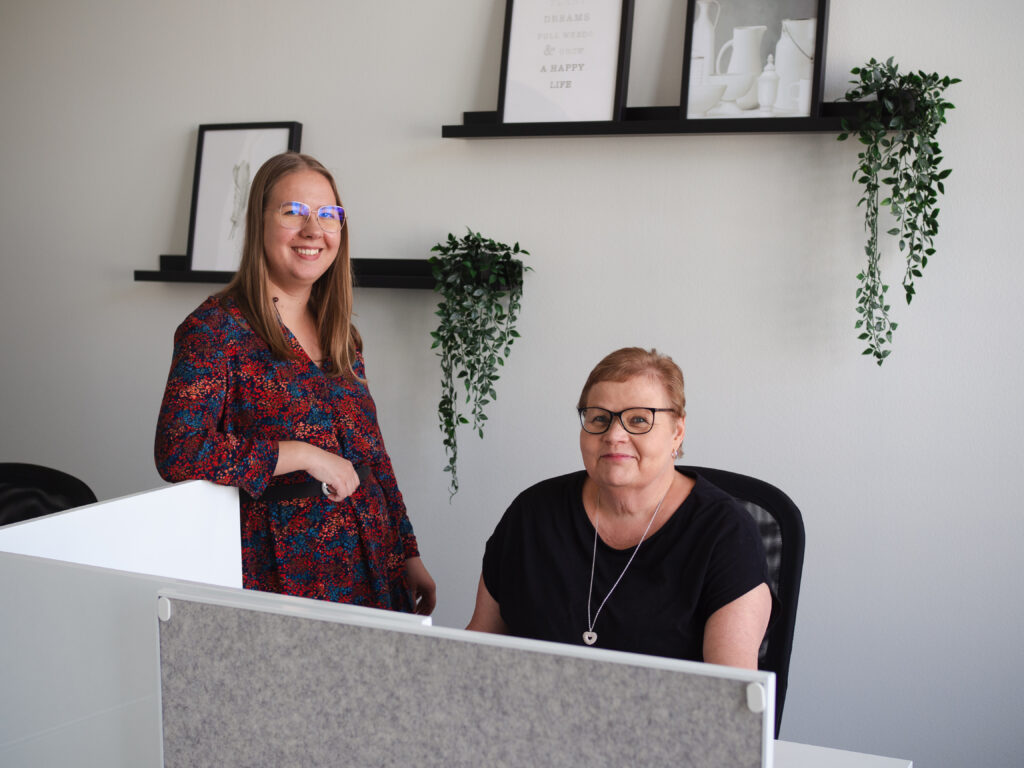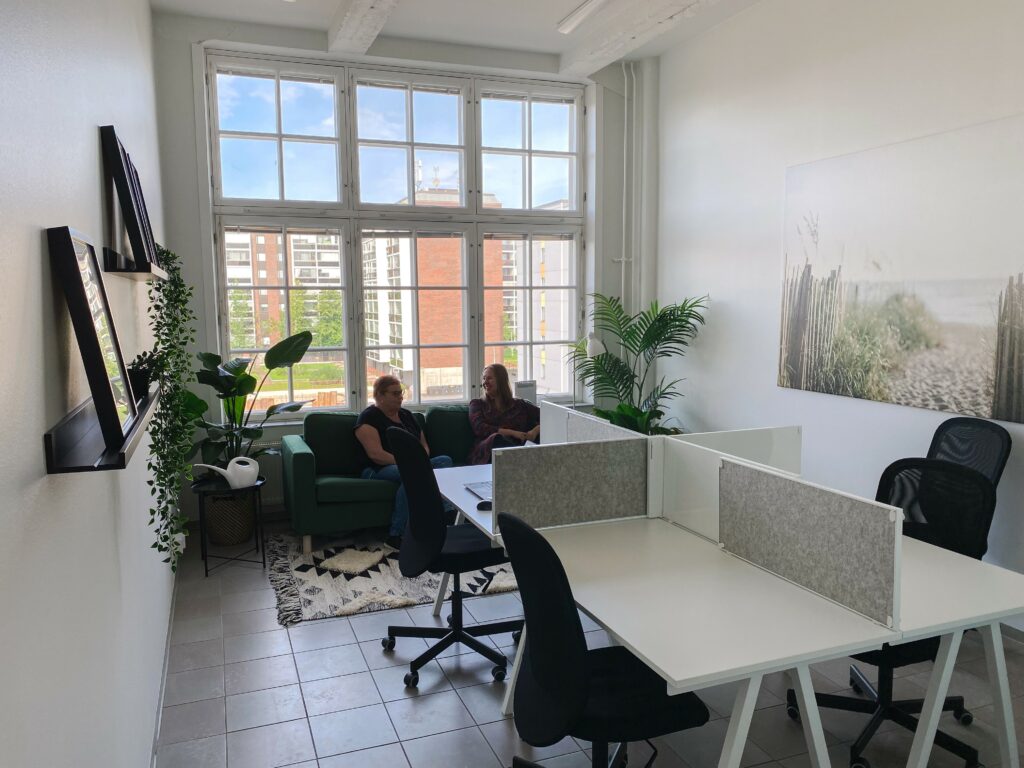Hannele Lehtonen, who is the property manager of Kojamo's Lumo Home Centre in Tampere, has received a lot of praise over the years for good customer experience and its development from both the residents of Lumo homes and her colleagues. How does she manage it so well? We will let Lehtonen tell you.

Long-time seasoned professional
Hannele Lehtonen has been working at Kojamo for almost two decades and says that she still enjoys her work very much. Over the years, she has received a lot of praise as a property manager from both residents and colleagues alike. According to one bit of customer feedback, no property manager can be found who is better and more professional than Lehtonen.
Lehtonen’s colleagues also praise her as a great customer service representative and she was nominated for the “Through the customer’s eyes” award at Kojamo Day 2023. Lehtonen’s nomination was justified by the fact that she is a seasoned professional who genuinely likes working with residents. In the eyes of her colleagues, it seems that Lehtonen knows each resident personally.
“Hannele is a long-time professional who handles customer situations very well and always strives to find a solution that makes the customer happy. Client satisfaction results have been excellent throughout the years,” an anonymous colleague described Lehtonen in connection with the Successes of the Year 2023 competition.
Customer service with a big heart and calm demeanour
What makes Lehtonen a good customer service representative, in her own opinion?
“I try to be as approachable as possible, that is, I walk around among the residents and I stay and chat whenever I can, so the residents come to me easily,” Lehtonen says with a smile.
Lehtonen also never diminishes a resident’s issue.
“Sometimes I am asked questions that have nothing to do with building management, but some kind of answer should still be given to the resident. I don’t put a limit on how small or big the issue is. All the things that have crossed the threshold to be asked about are important,” she says.
According to Lehtonen, she has not had any bad customer experiences. If a resident complains, they usually do so for a reason. However, Lehtonen does not have the power to influence everything in her work.
“Explaining then plays an essential role. It often satisfies the customer, even if I am unable to do everything they want,” she says.
In challenging situations, being calm works: when Lehtonen herself speaks calmly, the other gradually calms down too. Lehtonen does not shy away even from difficult situations, rather, she says that she enjoys challenges.
“My colleagues say that I have a very calm demeanour. I don’t really get nervous about anything,” she says, smiling.
Lehtonen also does not leave things hanging – she constantly keeps an ear out for the situation and is genuinely interested in fixing things. In her work, she is particularly motivated by helping others out, which is largely what a property manager’s job is about – solving the residents’ problems with the means available at the time.
Good colleagues have been a great support and help to Lehtonen, as she can always go to them when a situation reaches a stalemate. Sometimes, when wondering what you should do in a situation, talking to colleagues makes the pieces fall into place. Also, getting a good night’s sleep often helps to find a suitable solution.

Taking residents’ wishes into account
One of Lehtonen’s “favourite children” is Tampere’s Kyllikinkatu 15. The former shoe factory, originally designed by Emil Aaltonen, now contains 141 apartments.
Lehtonen has received mostly good feedback on her building management from the residents of the house. She has made a conscious effort to create a culture in the building where there is no threshold for residents to come and talk to her or the other residents.
“The house has a good community spirit. There, everyone greets each other when they cross paths and they do not go around with their hoods up and avoiding others,” she describes.
At Kyllikinkatu, among others, Lehtonen has tried to fulfill the residents’ wishes as much as possible. The large building has three so-called old smoking rooms, which were once intended to become apartments. However, the implementation would have become so expensive with drainage and piping that it was not profitable to turn the spaces into apartments. For this reason, the smoking rooms were left empty for a long time.
“Once, I received customer feedback on whether there could be remote work space in the house in question, which stayed in my mind. Our resident, who was also involved in the Suomen kaunein koti (Most Beautiful Home in Finland) programme, Laura Kirsilä also asked about the possibility of a remote workstation,” Lehtonen recalls.
Later, the head office of Kojamo in Helsinki asked about which houses would be in need of a remote work space. Kyllikinkatu 15 was finally chosen as one of the houses where the residents would be provided with a remote work space.
Lehtonen worked on the remote work space with Kojamo’s service designer at the time, and the design was commissioned at Ikea. Lehtonen was also assisted by one of her colleagues from Tampere and the people at the Helsinki head office. Residents were also allowed to influence the interior design of the space.
“In addition to artificial plants, our resident Laura wanted a few living plants in the remote work room, so I made a payment commitment to her and she picked up the plants she wanted from Ikea. Laura still takes care of them by watering them,” Lehtonen says.
The remote work room has received a lot of positive feedback from the residents, and the space has been in the use of the residents. In addition to the remote work space, the building also has a comfortable courtyard, a club room, a spacious and well-equipped gym, a craft space, a ping-pong room and public sauna facilities available for residents. In addition to the public sauna facilities, residents can book the VIP sauna on the top floor, which includes a comfortable lounge with a fireplace.
Of the three former smoking rooms, two have yet to be renovated. Next, at the request of the residents, one of the empty rooms will be turned into a library room at some point. Until now, the residents themselves have maintained a small library in the recess in the corridor of the house. There are old books and magazines in the small library nook that residents can read if they wish.
“It would be great to have a proper space for it, where residents could spend time reading without any disturbances. That would surely make them happy,” Lehtonen says with a smile.